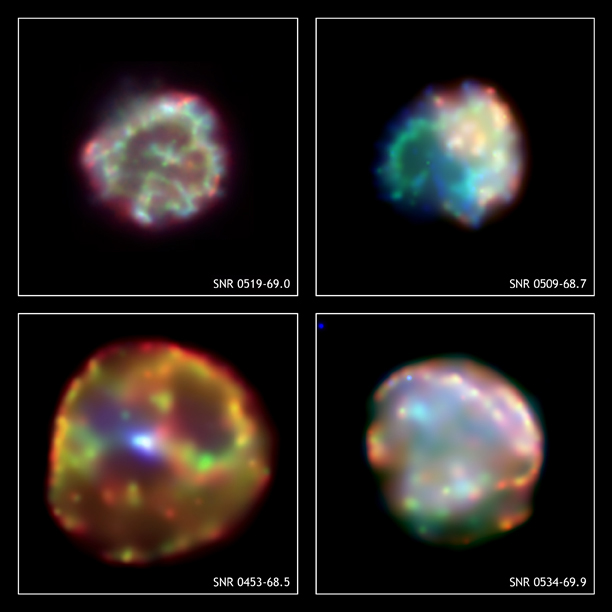
 Credit:NASA/CXC/SAO
Credit:NASA/CXC/SAO
Great Balls of Low Metallicity Fire
Supernovae mark the end of a star's life. The star can be a low mass star, in which a white dwarf remnant gets dumped on and explodes. Or it can be a high mass star where the energy crisis caused by the burning of all nuclear fuel in the star causes the star to first collapse, the explode. No matter whether the mass is large or small, the initial composition of the star is believed to play a crucial role in the eventual death of the star. One way to test the importance of chemical composition is to examine the X-ray emission from supernovae in galaxies whose chemical composition (what astronomers call "metallicity") differs from the average abundance of our Milky Way. The images above (taken by the Chandra X-ray Observatory) show X-ray emission from four supernovae from the Large Magellanic Cloud, one of the Milky Way's satellite galaxies whose metallicity is significantly lower than the Milky Way's.
<
HEA Dictionary ● Archive
● Search HEAPOW
● Other Languages
● HEAPOW on Facebook
● Download all Images
● Education ● HEAD
>
Each week the HEASARC
brings you new, exciting and beautiful images from X-ray and Gamma ray
astronomy. Check back each week and be sure to check out the HEAPOW archive!
Page Author: Dr. Michael F. Corcoran
Last modified Monday, 26-Feb-2024 17:45:59 EST


